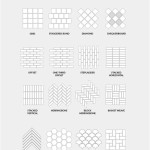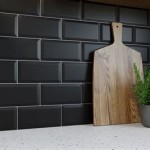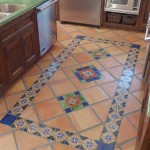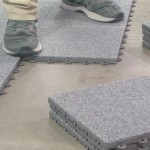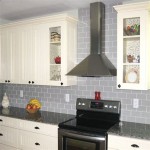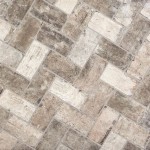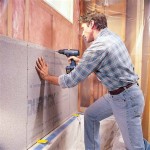How to Replace a Ceiling Tile That Has a Sprinkler Head
Replacing a ceiling tile that houses a sprinkler head requires careful planning and execution. Sprinkler systems are crucial components of fire safety, and any disruption or mishandling can compromise their effectiveness and potentially lead to accidental activation or damage. This article provides a detailed guide for replacing such a tile, emphasizing safety protocols and best practices to ensure a successful and safe outcome.
It is imperative to understand that interfering with a sprinkler system can have serious consequences, including fines and legal repercussions, depending on local regulations. Before undertaking this project, it is prudent to consult with a qualified fire safety professional or building manager. They can provide specific guidance related to the building's fire safety plan and local codes.
This guide assumes that the sprinkler system is not actively leaking or malfunctioning. If a leak is present, immediately contact a qualified plumber or fire sprinkler technician. Do not attempt to replace the tile until the leak is resolved. Any attempt to work around an active leak could cause further damage and create a safety hazard.
Key Point 1: Preparation and Safety Precautions
The success of this project hinges on proper preparation and adherence to strict safety protocols. Before even considering touching the ceiling tile, gather the necessary tools and materials. Ensure the work area is adequately prepared to minimize the risk of accidents and property damage.
Required Tools and Materials:
*Replacement Ceiling Tile: Obtain an exact match for the existing ceiling tile. The dimensions, texture, and fire rating should be identical. Check the back of the existing tile for manufacturer information or part numbers. Using a mismatched tile can affect the aesthetics of the ceiling and, more importantly, compromise the fire resistance of the ceiling assembly.
*Ladder or Step Stool: Use a sturdy ladder or step stool that is rated to support the weight of the user and any tools. Ensure the ladder is placed on a level surface and is properly secured to prevent slippage or tipping. Avoid using chairs or unstable objects as substitutes for a proper ladder.
*Gloves: Wear work gloves to protect hands from dirt, dust, and sharp edges. Ceiling tiles can sometimes have rough or damaged edges, which can cause cuts or abrasions.
*Safety Glasses: Wear safety glasses to protect eyes from falling debris. Dust, particles, and fragments of the old ceiling tile can irritate or injure the eyes.
*Dust Mask: Wear a dust mask or respirator to avoid inhaling dust and particles. Older ceiling tiles may contain asbestos, so it's essential to take precautions to prevent inhalation of potentially harmful materials. Consult with a professional if there's a concern about asbestos.
*Utility Knife or Scoring Tool: A sharp utility knife or scoring tool is necessary for carefully cutting the replacement tile to accommodate the sprinkler head. Ensure the blade is sharp to create clean, precise cuts.
*Measuring Tape: A measuring tape will ensure accurate measurements for cutting the replacement tile. Precise measurements are crucial for a clean and professional-looking installation.
*Pencil or Marker: A pencil or marker is used to mark the cutting lines on the replacement tile. Choose a writing utensil with a fine tip for accuracy.
*Drop Cloth or Protective Sheet: Cover the area below the ceiling tile with a drop cloth or protective sheet to catch falling debris and protect the flooring or furniture.
*Sprinkler Head Wrench (Optional): If the sprinkler head needs to be slightly adjusted, use a specialized sprinkler head wrench. Regular wrenches should *never* be used as they can damage the sprinkler head.
Safety Precautions:
*Turn Off Power (If Applicable): If any electrical wiring is near the ceiling tile, turn off the power to the circuit breaker that controls the wiring. This prevents the risk of electrical shock. Use a non-contact voltage tester to confirm that the power is off before proceeding.
*Alert Building Management: Inform building management or the fire safety department about the planned tile replacement. They may have specific protocols or requirements that must be followed. They may also need to temporarily disable the fire alarm system during the replacement process to prevent false alarms.
*Avoid Direct Contact with Sprinkler Head: Exercise extreme caution when working around the sprinkler head. Avoid bumping, hitting, or applying any significant pressure to the head. Damaging the sprinkler head can cause accidental activation or render the system ineffective.
*Inspect for Asbestos: If the building was constructed before the 1980s, there is a possibility that the ceiling tiles contain asbestos. If you suspect asbestos, do not proceed with the tile replacement. Contact a qualified asbestos abatement professional to handle the removal and disposal of the tile.
Key Point 2: Removing the Damaged Ceiling Tile
Removing the damaged ceiling tile requires a delicate approach to avoid damaging the surrounding tiles, the grid system, and, most importantly, the sprinkler head.
Steps for Removing the Tile:
1.Position the Ladder: Place the ladder or step stool directly beneath the damaged ceiling tile. Ensure the ladder is stable and secure before climbing.
2.Gently Lift and Tilt: Carefully lift the edge of the tile on one side and gently tilt it downwards. This will allow you to access the top surface of the tile.
3.Clear Obstructions: Check for any wiring or other obstructions that may be resting on the tile. Carefully move these obstructions out of the way to avoid damaging them.
4.Lower the Tile: Slowly lower the tile from the grid system. Be mindful of the sprinkler head as you lower the tile. Avoid bumping or snagging the sprinkler head on the tile.
5.Dispose of the Tile Properly: Dispose of the damaged tile according to local regulations. If there is a possibility that the tile contains asbestos, it must be disposed of as hazardous waste by a qualified professional.
Addressing the Sprinkler Head:
The most critical aspect of removing the tile is carefully maneuvering it around the sprinkler head. The following techniques can help:
*Diagonal Removal: If possible, try removing the tile diagonally to provide more clearance around the sprinkler head. This involves gently angling the tile as it is lowered.
*Slight Grid Adjustment: In some cases, it may be necessary to slightly flex the grid system to create more space around the sprinkler head. Do this with extreme caution to avoid dislodging other tiles or damaging the grid. If the grid is difficult to flex, do not force it.
Key Point 3: Preparing and Installing the Replacement Tile
Preparing the replacement tile to accommodate the sprinkler head requires precise measurements and careful cutting. This ensures a snug fit and maintains the integrity of the ceiling.
Preparing the Replacement Tile:
1.Measure and Mark: Using a measuring tape, determine the exact location of the sprinkler head on the old tile. Transfer these measurements to the replacement tile. Use a pencil or marker to mark the center point and the diameter of the circle that needs to be cut out.
2.Cut the Hole: Use a utility knife or scoring tool to carefully cut out the circle on the replacement tile. Score the circle multiple times, gradually deepening the cut until the circle is completely removed. Avoid using excessive force, as this can damage the tile.
3.Test Fit: Before installing the tile, test fit it around the sprinkler head. Ensure that the sprinkler head fits snugly through the hole and that the tile sits flush against the grid system. If necessary, make minor adjustments to the hole using the utility knife.
Installing the Replacement Tile:
1.Position the Tile: Carefully position the replacement tile beneath the opening in the ceiling. Ensure that the sprinkler head is aligned with the hole in the tile.
2.Lift and Insert: Gently lift the tile into place, guiding the sprinkler head through the hole. Ensure that the tile is sitting squarely on the grid system.
3.Secure the Tile: Make sure the tile is securely seated in the grid. There should be minimal gaps between the tile and the grid. If the tile is loose, it may be necessary to adjust the grid system or add shims to provide additional support.
4.Final Inspection: Once the tile is installed, conduct a final inspection to ensure that the sprinkler head is unobstructed and that the ceiling tile is flush with the surrounding tiles. Verify that the tile is securely in place and cannot be easily dislodged.
Post-Installation Considerations:
After the tile is replaced, there are a few additional steps to consider:
*Inform Building Management: Notify building management or the fire safety department that the tile replacement is complete. They may want to inspect the installation to ensure that it meets safety requirements.
*Monitor for Leaks: After the tile is replaced, monitor the area around the sprinkler head for any signs of leaks. If a leak is detected, immediately contact a qualified plumber or fire sprinkler technician.
*Document the Replacement: Keep a record of the tile replacement, including the date, the type of tile used, and any issues that were encountered. This information can be helpful for future maintenance or repairs.
Replacing a ceiling tile with a sprinkler head present requires patience and precision. By following these steps and prioritizing safety, individuals can successfully complete the project while minimizing risk to the sprinkler system and themselves. However, remember that engaging a qualified professional is always the safest and most recommended option, particularly if uncertainty exists about the procedure or building codes.

How To Install Ceiling Tile With Sprinkler Head In The Middle Skill Stacking

How To Remove And Replace A Ceiling Tile With Fire Sprinkler

How To Install Ceiling Tile With Sprinkler Head In The Middle Breakdown Skill Stacking

How To Remove And Replace A Ceiling Tile With Fire Sprinkler

How To Replace Drop Ceiling Tiles

Ceiling Tile Sprinkle Hole Cutting Tricks

How To Replace A Recessed Fire Sprinkler Escutcheon

How To Replace A Recessed Fire Sprinkler Escutcheon

Replacing Escutcheons Using Retrofit Fire Sprinkler

Drop Out Ceiling Panels Ceilume
Related Posts

